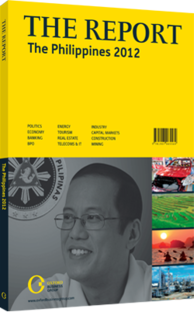Power play: Consolidation creates a duopoly in the mobile market
The merger of two of the country’s three remaining telecoms operators into a single market-dominating force in 2011 marked the latest stage in the consolidation of the sector. With just two providers left from six just two decades ago, the country’s mobile market is now effectively a duopoly.
ACQUISITION: The union was initiated in March 2011, when the country’s largest telecoms player, Philippine Long Distance Telephone Company (PLDT), agreed to purchase a 51.6% controlling stake in Digital Telecommunications Philippines (Digitel), which operates Sun Cellular, the third-largest mobile operator.
The P69.2bn ($1.57bn) deal was the nation’s largest-ever merger when it was finally approved in October 2011, following a nearly seven-month period of review by the regulatory authorities. Upon completion of the deal, PLDT upped its 52% share of the mobile market via its service provider Smart to approximately 69% with the addition of Sun’s 17% share.
While some analysts have indicated that PLDT may have paid a premium for Digitel, the benefits of a commanding market share are undeniable. Now that the deal has been signed, the difficult work of integrating different cost structures and business models into the company’s overall operations has begun. With such a large share of the market, PLDT could be in danger of swallowing its own base of distinct service providers. As this transition continues, Globe Telecom, the sole remaining competitor, will likely try to recoup market share lost to Sun Cellular when the company offered a low-cost unlimited service plan. Any move by PLDT to tinker with these established market niches could create opportunities for the competition.
LEGALITY: In many markets this sort of dominance by a single telecoms provider would be unthinkable, and almost certainly illegal. However, the Philippines is in a unique situation in that it has no anti-trust legislation on the books. Because of this, the whole process is within the legal boundaries governing the sector as well as the economy as a whole. After weighing concerns from the company’s rival, Globe Telecom, along with those from consumer groups and members of the government, the National Telecommunications Commission (NTC), the sector regulator, gave its approval for the acquisition to go ahead.
However, the NTC’s decision did not end discussion on the matter, and the Philippine Congress continued to debate specific aspects of the merger to ensure that the new entity’s power would not distort the market and saddle consumers with fewer options and artificially high prices. While consolidation of the customer base would be cause for concern in any industry, the market percentage alone was not the only point of contention for other market players.
“Globe was not opposed to the deal per se, but was concerned about the other effects that would come about as a result of the deal,” Jose Fajardo, the head of investor relations at Globe Telecom, told OBG. “The primary bone of contention was in the disproportionate allocation of 3G frequencies that the PLDT conglomerate would possess as a result of the deal.”
3G LICENCES: Since Connectivity Unlimited Resource Enterprise’s (CURE) 3G mobile venture Red Mobile was acquired by PLDT in 2010 as part of its strategy of expansion through mergers and acquisitions, PLDT has taken control of some 45 MHz of 3G capability, compared to the 10 MHz allocated to Globe Telecom. This discrepancy was promptly referred to the sector’s regulatory authority for resolution.
In 2010 the NTC decided that PLDT had to let go of its third 3G licence. In October 2011 the government regulator gave the company nine months to transfer its Red Mobile customer base and hand over control of the related 3G spectrum to the NTC for reallocation. In return, PLDT will would be entitled to receive monetary compensation in line with what it originally paid for CURE, although the exact formula of how this would be determined was not yet confirmed as of late 2011. In mid-2012, once the transition is complete, the NTC is expected to open bidding on the licence.
You have reached the limit of premium articles you can view for free.
Choose from the options below to purchase print or digital editions of our Reports. You can also purchase a website subscription giving you unlimited access to all of our Reports online for 12 months.
If you have already purchased this Report or have a website subscription, please login to continue.

